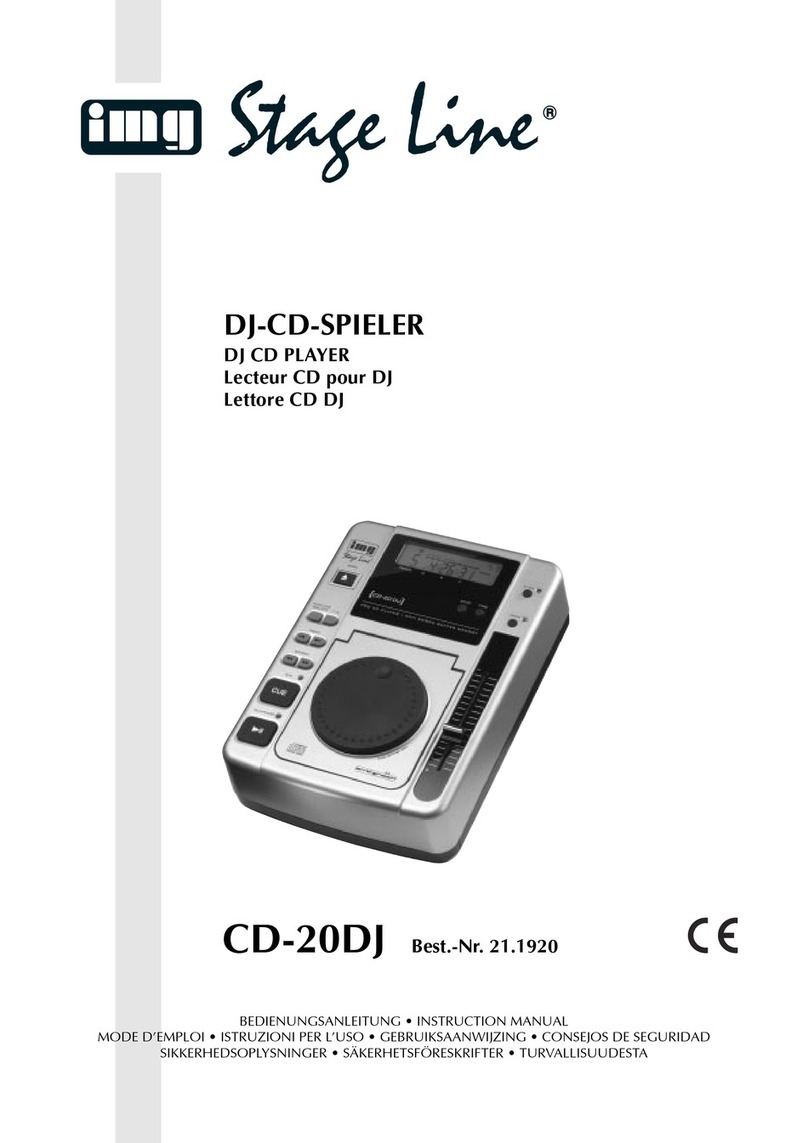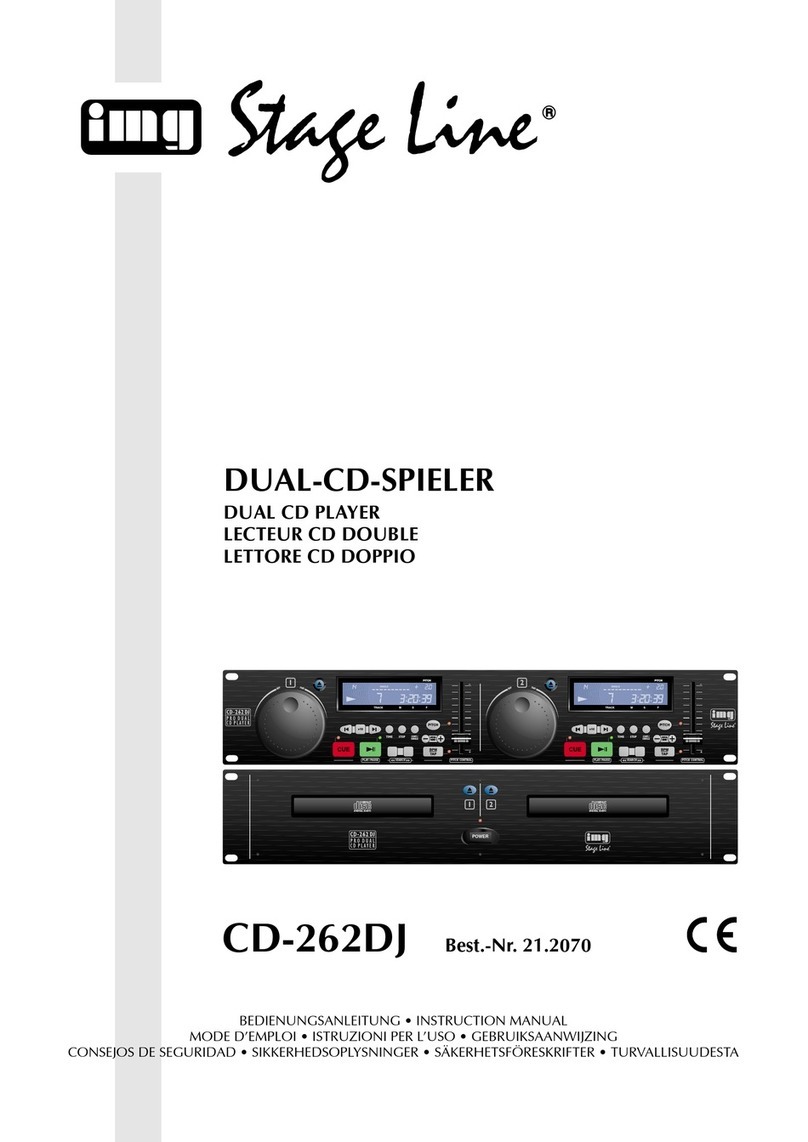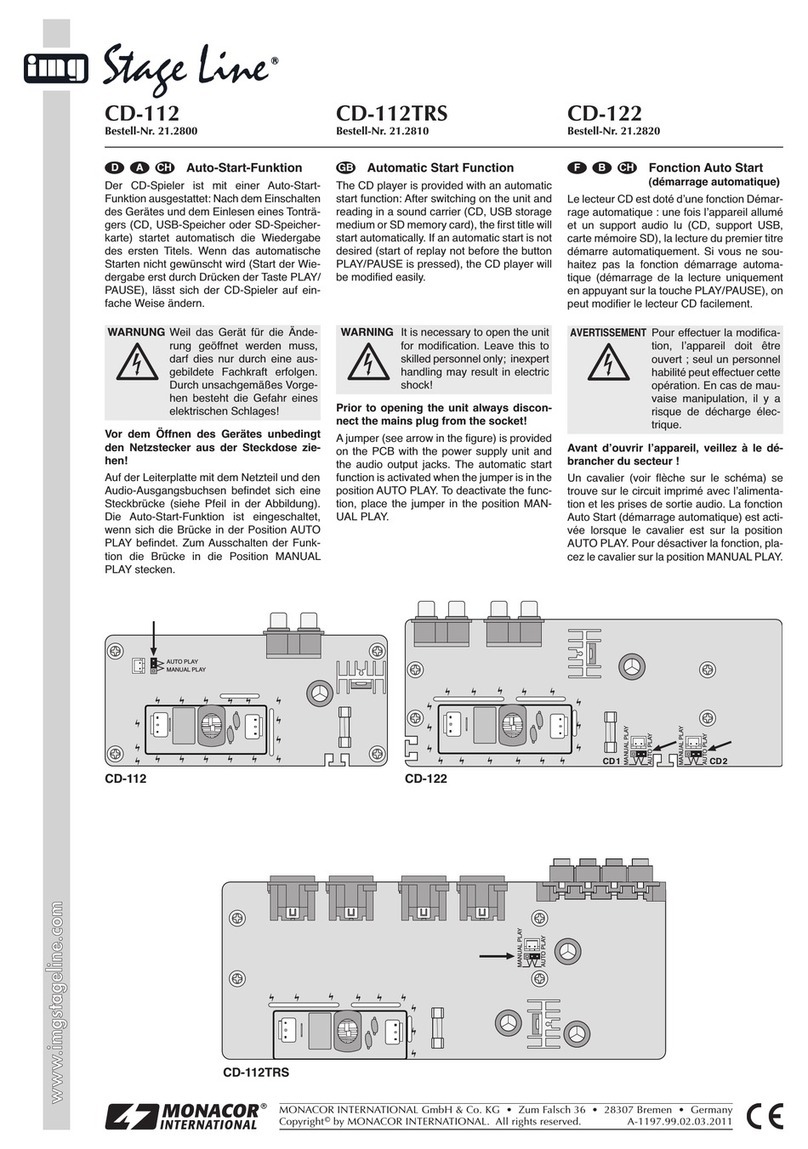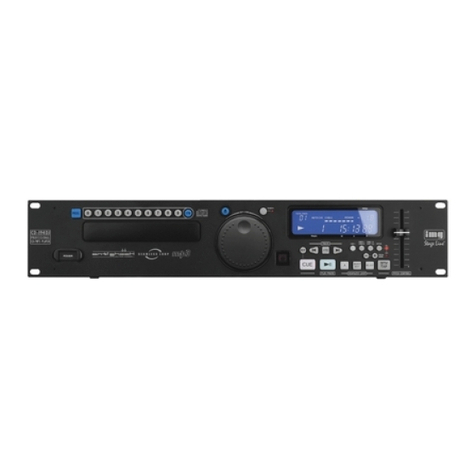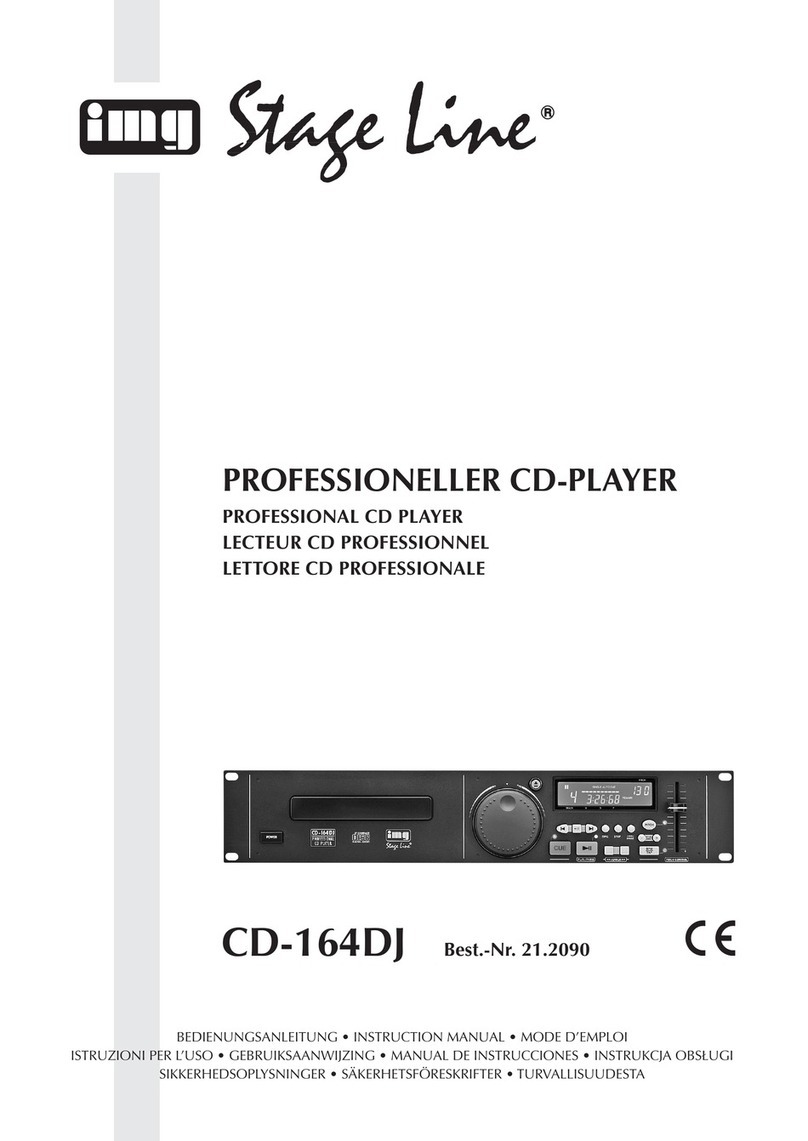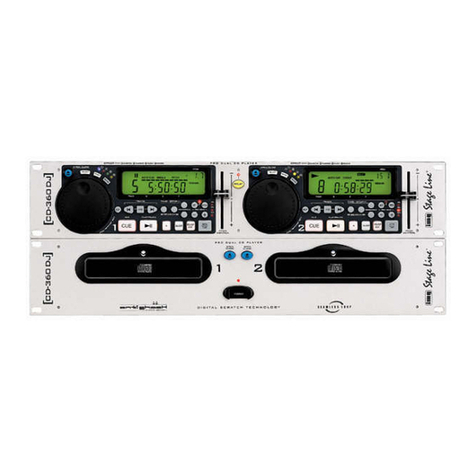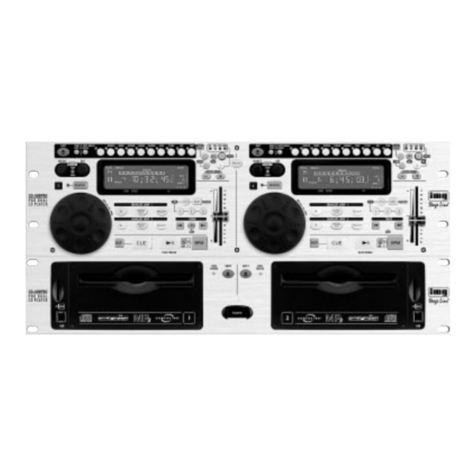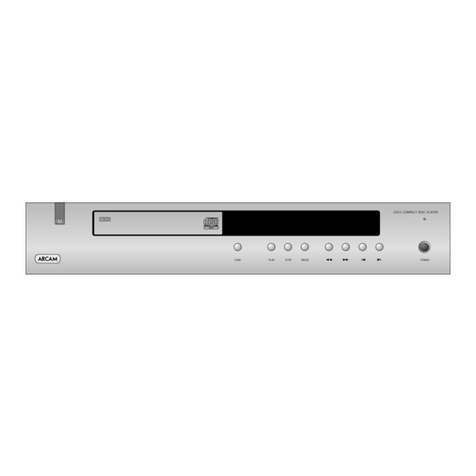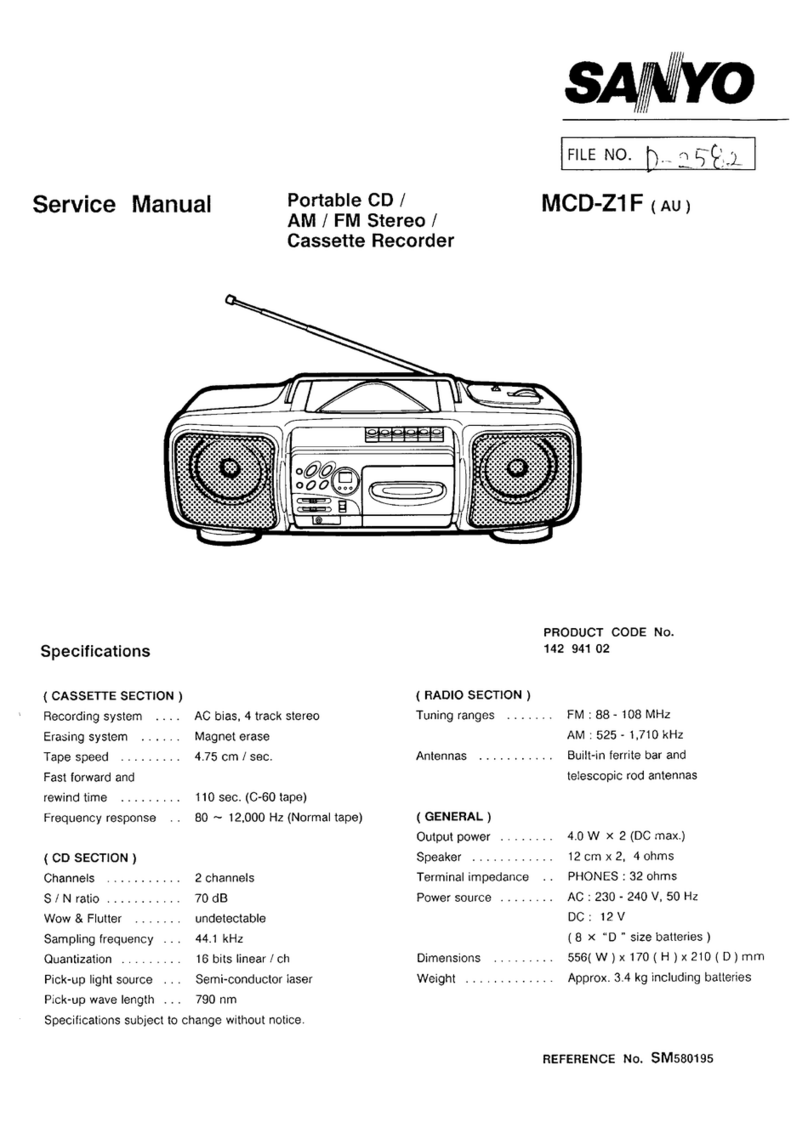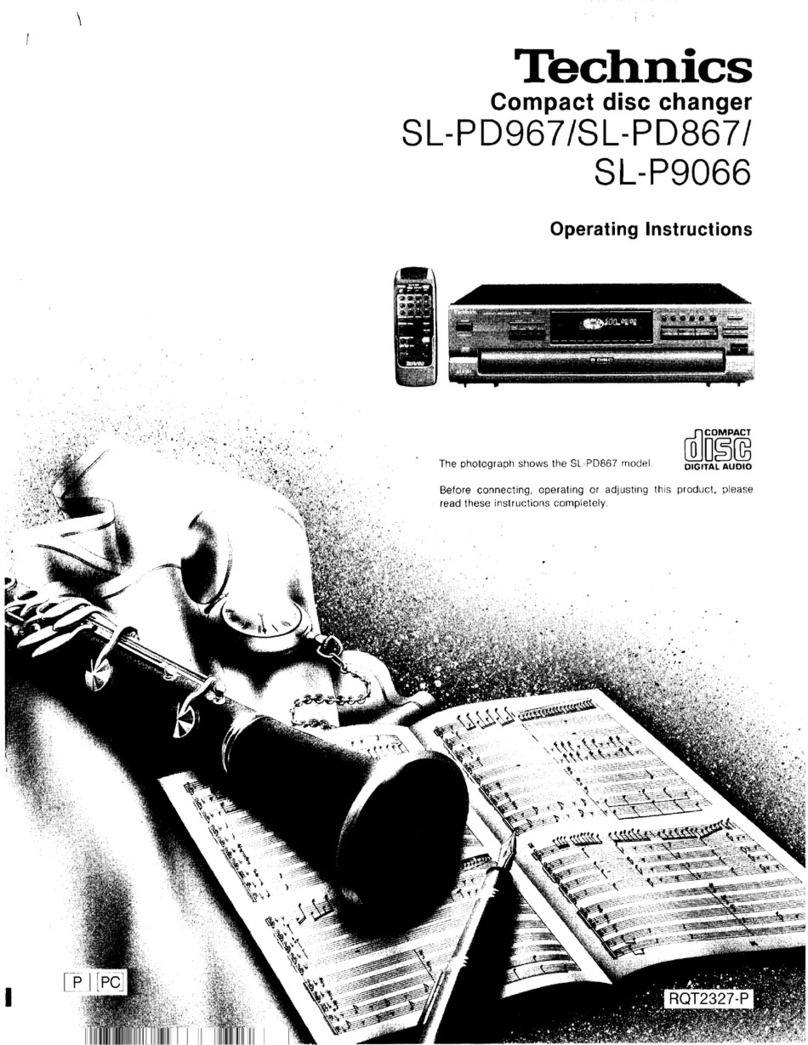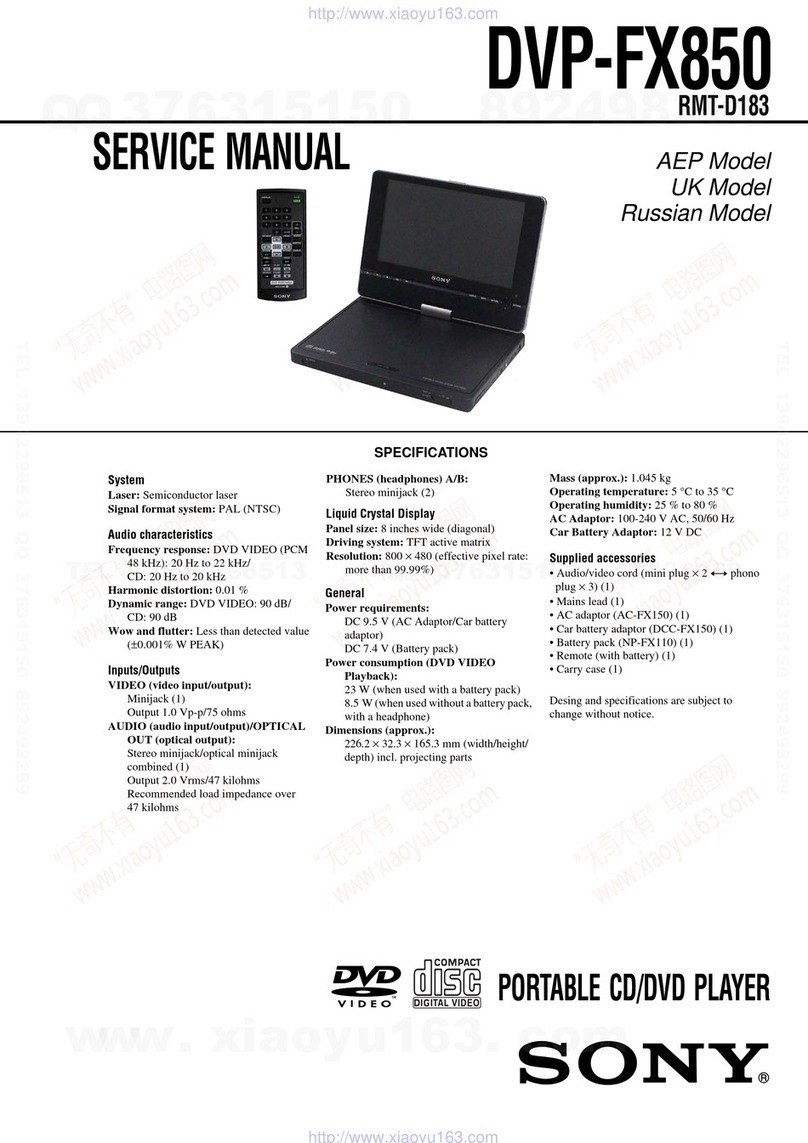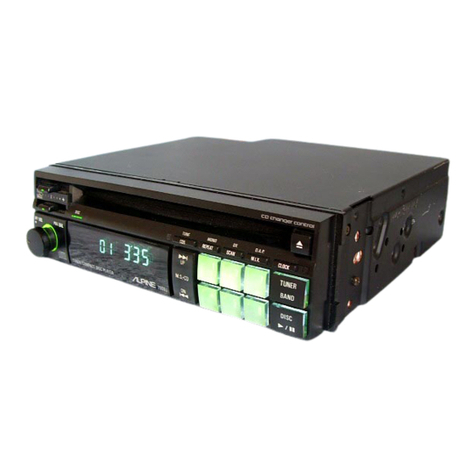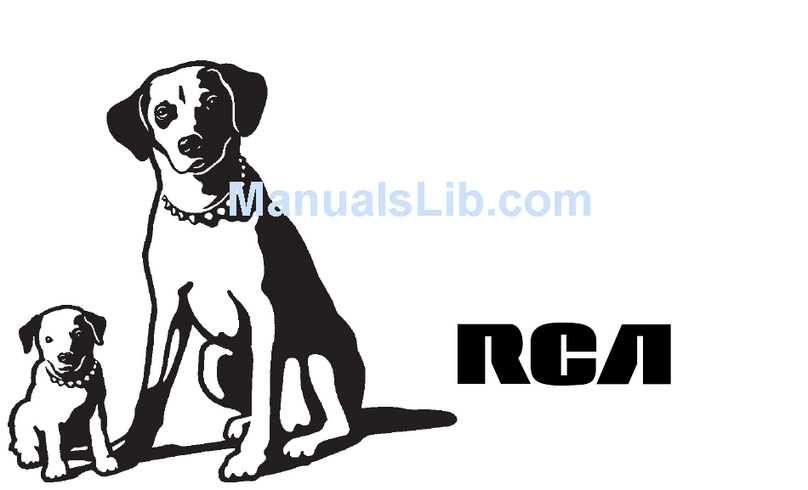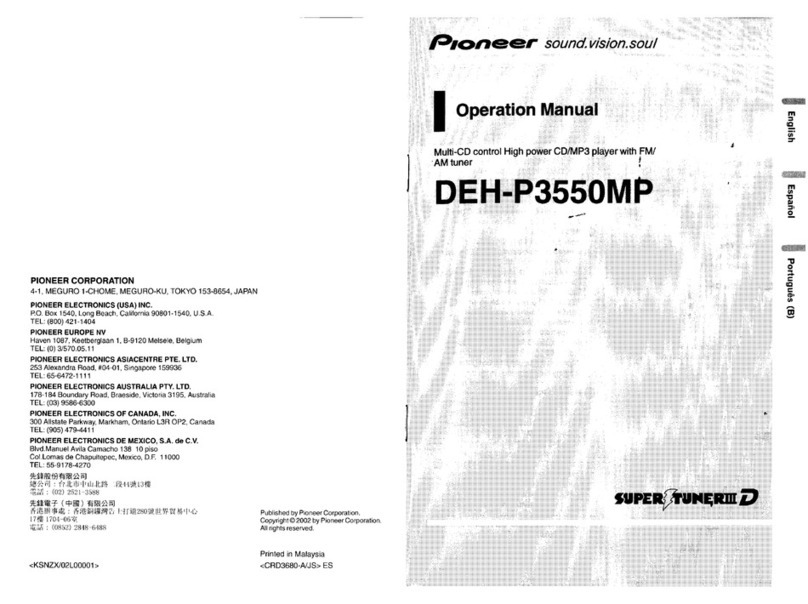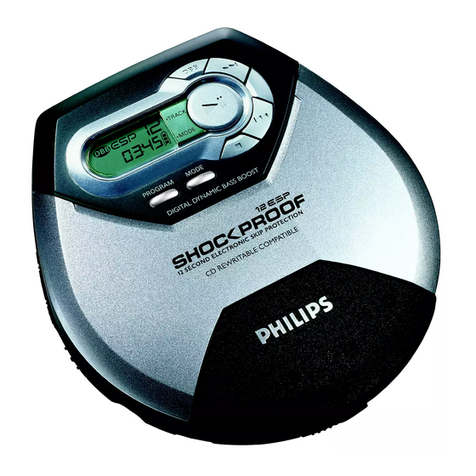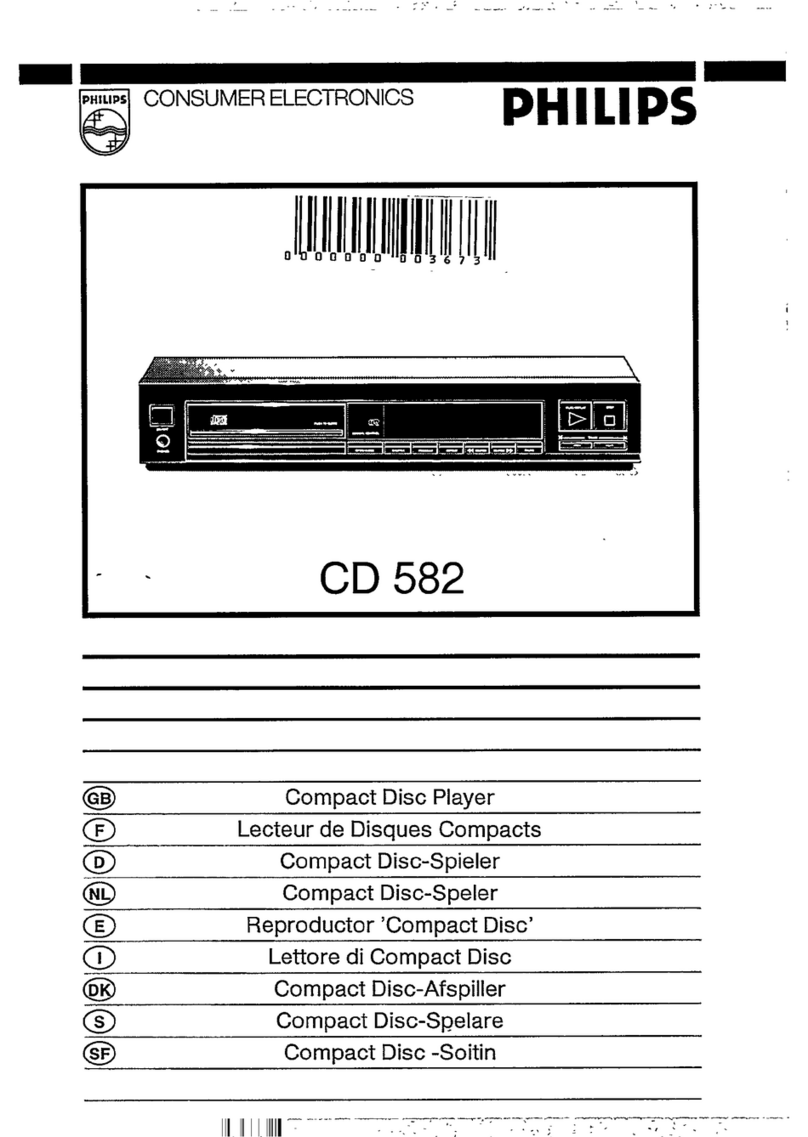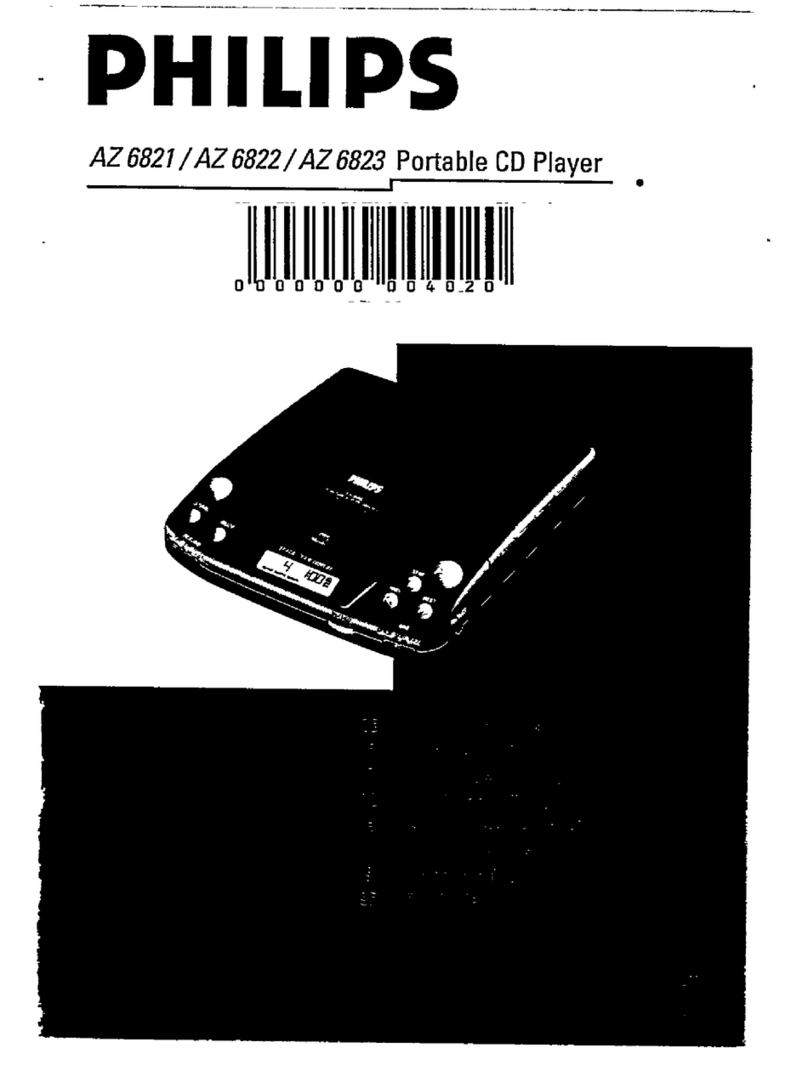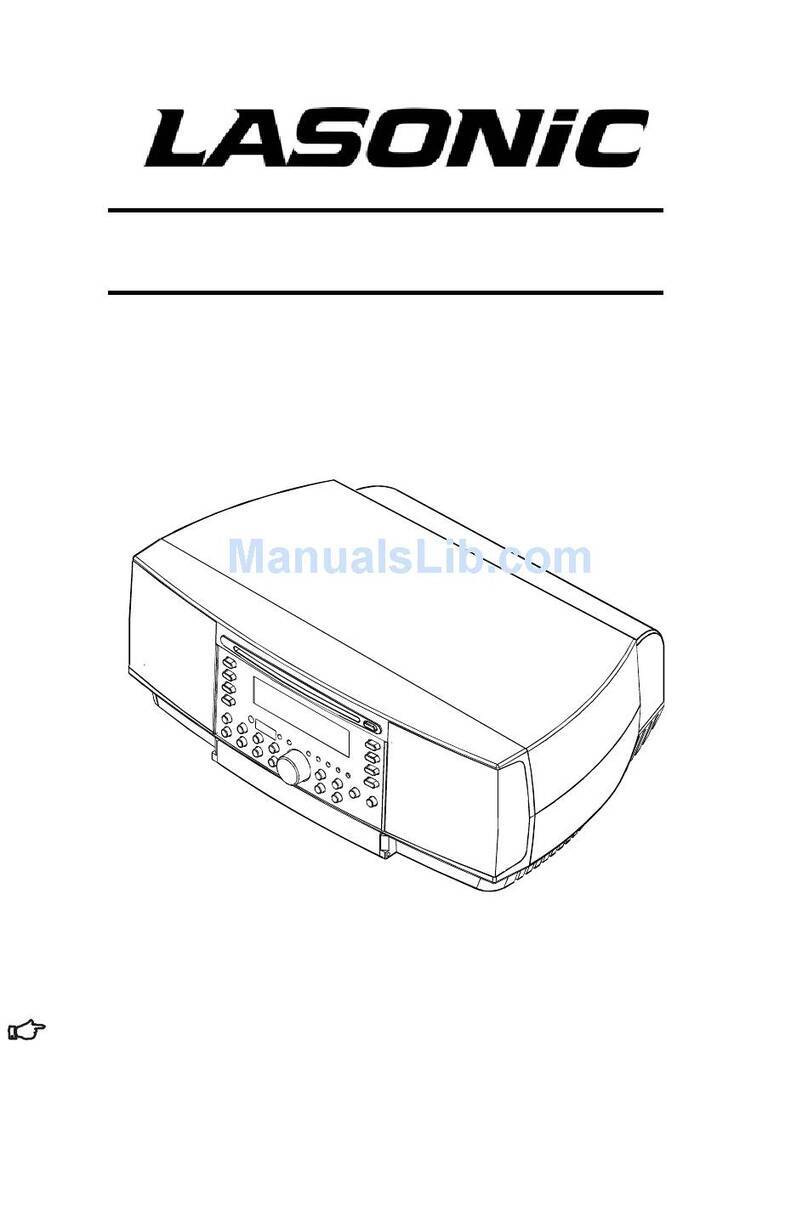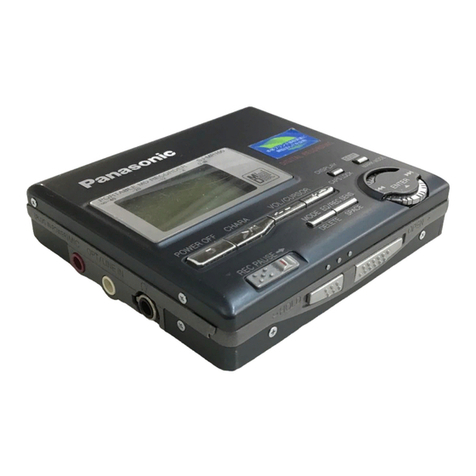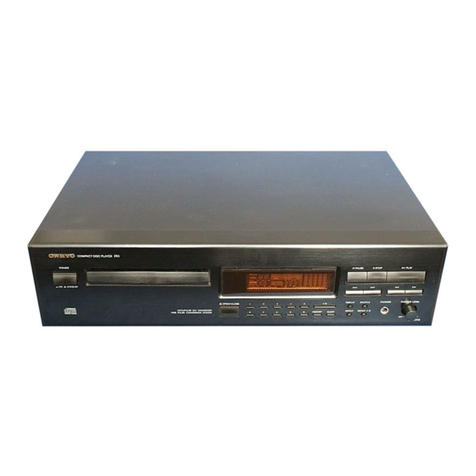6
D
A
CH
an die entsprechende Buchse des Misch-
pultes anschließen. Der Spieler muss auf
die Faderstartart des Mischpultes eingestellt
werden Kapitel 5.13.
3) Zuletzt den Stecker des Netzkabels (40) in
eine Steckdose (230 V~/50 Hz) stecken.
5 Bedienung
Das Gerät mit dem Netzschalter POWER (12)
einschalten. Das Display zeigt kurz „boot“ (Start-
vorgang) und WELCOME zur Begrüßung. Nach
jedem Einschalten ist automatisch das CD-Lauf-
werk angewählt. Befindet sich keine CD im Lauf-
werk, wird auf den USB-Anschluss gewechselt.
Ist auch kein USB-Speichermedium angeschlos-
sen, wird „no dISC“ (keine CD) angezeigt.
Nach dem Betrieb das Gerät mit dem Schal-
ter POWER ausschalten. Folgende Einstellungen
bleiben für den nächsten Betrieb gespeichert:
1. der gewählte Betriebsmodus Kapitel 5.4
2. die gewählte Laufzeitanzeige Kapitel 5.3
3. der gewählte Geschwindigkeitseinstellbereich
Kapitel 5.9
Die Bedienung kann über die Tasten am Gerät
oder über die Fernbedienung erfolgen. Kapitel 5
behandelt ausschließlich die Bedienung über die
Tasten am Gerät. In Kapitel 6 finden Sie alle
Informationen zur Fernbedienung.
5.1 Musikstücke abspielen
1) Zum Einlegen einer CD die CD-Schublade
(1) mit der Taste (3) öffnen. Die CD mit der
Beschriftung nach oben einlegen und die CD-
Schublade mit der Taste wieder schließen.
Zusätzlich oder alternativ kann ein USB-
Stick in den USB-Anschluss (2) gesteckt oder
eine Festplatte (ggf. mit eigener Stromver-
sorgung) mit dem USB-Anschluss verbunden
werden.
2) Zum Umschalten zwischen CD und USB-
Speichermedium die Taste CD/USB (13)
drücken. Der Spieler muss dazu auf Pause
geschaltet sein; ggf. die Taste (19) drü-
cken. Der gewählte Datenträger wird im Dis-
play angezeigt: „CD“ oder „USB“ (J).
3) Nach dem Einlesen eines Datenträgers steht
der Spieler am ersten Titel auf Pause. Das
Display zeigt unter der Anzeige „TRACK“ (A)
die Nummer des Titels (bei MP3-Betrieb: die
Nummer des Titels im Ordner) und unter der
Anzeige „Total“ (M) die Gesamtanzahl der
Titel (bei MP3-Betrieb: die Gesamtanzahl der
Titel im Ordner).
Sind auf einer Festplatte mehrere Partitionen
angelegt, zum Anwählen einer anderen
Partition folgendermaßen vorgehen:
a) Die Taste FOLDER (4) so lange gedrückt
halten, bis die Zeitanzeige (O) des Dis-
plays auf „PA-SEL“ umspringt. Die Text-
zeile (N) zeigt den Namen der aktuellen
Partition an.
b) Mit der Taste oder (18) die Partition
wählen. Wird eine der Tasten gedrückt
gehalten, lassen sich die Partitionen mit
dem Drehrad (16) schnell anwählen.
c) Zum Bestätigen die Taste FOLDER drü-
cken.
Hinweis zu Partitionen mit mehreren Ordnern:
Wird nach dem Aufrufen des Partitionswahlmodus
die Partition
nicht
gewechselt, sondern die aktuelle
Partition mit der Taste FOLDER bestätigt, zeigt das
Display „FO-SEL“, die Einblendung „FOLDER“ (A)
und die Anzahl der Ordner (M). Wird jetzt eine der
SKIP-Tasten (18) gedrückt, wechselt der Spieler in
den Ordnerwahlmodus und der gewünschte Ordner
kann angewählt werden Bedienschritt 4.
4) Sind bei MP3-Betrieb die Titel in verschiede-
nen Ordnern einsortiert, zum Anwählen
eines anderen Ordners folgendermaßen
vorgehen:
a) Die Taste FOLDER (4) drücken. Die Zeit-
anzeige (O) springt auf „FO-SEL“ um. Das
Anzeigefeld (A) wechselt von „TRACK“
auf „FOLDER“ und zeigt jetzt die Nummer
des aktuellen Ordners. Das Anzeigefeld
(M) zeigt die Gesamtanzahl der Ordner.
b) Mit der Taste oder den Ordner aus-
wählen. Wird eine der Tasten gedrückt
gehalten, lassen sich die Ordner mit dem
Drehrad (16) schnell anwählen.
c) Zum Bestätigen der Auswahl die Taste
FOLDER drücken; das Display wechselt
wieder auf die Laufzeitanzeige (O) und die
Anzeige „TRACK“ (A).
5) Zum Starten des ersten Titels die Taste
(19) drücken. Während der Wiedergabe wird
(B) angezeigt und die LED über der Taste
leuchtet konstant. Das Abspielen kann jeder-
zeit mit der Taste unterbrochen und wie-
der fortgesetzt werden. Im Pausenmodus
blinkt die LED über der Taste.
Zum Anwählen eines anderen Titels die
Tasten und (18) verwenden:
Taste : Zum nächsten Titel springen
Taste : An den Anfang des gerade laufen-
den Titels springen. Durch mehrfaches Drü-
cken der Taste wird immer ein Titel weiter
zurückgesprungen.
Wird eine der Tasten gedrückt gehalten,
lassen sich die Titel mit dem Drehrad (16)
schnell anwählen.
6) Während der Wiedergabe einer CD ist die
CD-Schublade gesperrt. Für einen CD-
Wechsel erst mit der Taste auf Pause
schalten, dann zum Öffnen der Schublade
die Taste drücken.
Während der Wiedergabe eines USB-
Speichermediums kann die CD-Schublade
jedoch geöffnet werden.
7) Vor dem Ausschalten des Gerätes immer die
CD-Schublade mit der Taste schließen, um
das Laser-Abtastsystem vor Verschmutzung
zu schützen.
5.2 Playlists laden
Zum Abspielen einer bestimmten Auswahl von
MP3-Dateien lassen sich auf einem Computer
erstellte Playlists mit der Dateiendung „wpl“,
„xml“ oder „m3u“ in den Spieler laden.
Wichtig: Die Playlist und die dazugehörigen
MP3-Dateien müssen sich auf demselben Spei-
chermedium befinden. Playlists müssen immer
im Hauptverzeichnis (root directory) gespeichert
sein.
1) Der Spieler muss auf Pause geschaltet sein;
ggf. die Taste (19) drücken.
2) Die Taste CONT./LIST (6) gedrückt halten
und mit der Taste oder (18) wählen,
nach welchem Playlist-Dateiformat gesucht
werden soll. Die Textzeile (N) zeigt die Aus-
wahl an: „M3U Scan“, „WPL Scan“, „XML
Scan“ (Bei Auswahl der vierten Option „Fol-
der“ wird keine Playlist geladen).
Nach dem Lösen der Tasten ist die erste
Playlist geladen. Das Display zeigt unter der
Anzeige „TRACK“ (A) die Nummer des Titels
in der Playlist und unter der Anzeige „Total“ (M)
die Gesamtanzahl der Titel in der Playlist.
Hinweis: Werden keine Playlists gefunden, zeigt
das Display „no FILE“. Dann bei gedrückt gehalte-
ner Taste CONT./LIST mit der Taste oder ent-
weder ein anderes Dateiformat anwählen oder die
Option „Folder“, um in den Ordner-Abspielmodus
zurückzukehren.
3) Sind mehrere Playlists vorhanden, zum
Anwählen einer anderen Playlist folgen-
dermaßen vorgehen:
a) Die Taste FOLDER (4) drücken. die Zeit-
anzeige (O) springt auf „FO-SEL“ um. Das
Anzeigefeld (A) wechselt von „TRACK“
auf „FOLDER“ und zeigt jetzt die Nummer
der aktuellen Playlist. Das Anzeigefeld (M)
zeigt die Gesamtanzahl der Playlists im
gewählten Dateiformat.
b) Die Playlist mit der Taste oder aus-
wählen. Wird eine der Tasten gedrückt
gehalten, lassen sich die Playlists mit dem
Drehrad (16) schnell anwählen.
c) Zum Bestätigen der Auswahl die Taste
FOLDER drücken. Das Display wechselt
wieder auf die Laufzeitanzeige (O) und die
Anzeige „TRACK“ (A).
4) Die Wiedergabe des ersten Titels starten
oder einen anderen Titel der Playlist anwäh-
len Kapitel 5.1, Bedienschritt 5.
5) Um die Titel wieder ohne Playlist abzuspie-
len, mit der Taste auf Pause schalten. Die
Taste CONT./LIST gedrückt halten und die
Taste oder so oft drücken, bis die Text-
zeile „Folder“ anzeigt. Nach dem Lösen der
Tasten ist dann keine Playlist mehr geladen.
5.3 Anzeige der Titelinformationen,
Laufzeitanzeige und BPM-Anzeige
1. Informationen zum Titel werden in der Text-
zeile (N) angezeigt:
– bei Standard-Audio-CDs mit CD-Text der
Titelname
– bei MP3-Betrieb der Dateiname
Die Textzeile lässt sich auf die Anzeige fol-
gender Informationen (ID3-Tags) um-
schalten. Dazu die Taste TIME/TAG (5)
gedrückt halten und mit der Taste oder
(18) wählen:
Anzeige (L)
TITLE = Titelname
ALBUM = Albumname
ARTIST = Künstlername
keine = Dateiname
Mit der Taste FOLDER (4) kann die Text-
zeile umgeschaltet werden zwischen der
Anzeige der jeweiligen Titelinformation
und der Anzeige des Namens des Ordners
(bzw., wenn eine Playlist geladen ist, des
Namens der Playlist).
2. Die Laufzeit des Titels wird als numerische
Anzeige (O) dargestellt; die Sekunden sind in
75 sogenannte Frames unterteilt. Zusätzlich
stellt die Balkenanzeige (H) die Laufzeit,
bezogen auf die Titeldauer, durch ihre Länge
grafisch dar (relative Zeitdarstellung). Die
letzten 30 Sekunden eines Titels signalisiert
der Balken durch Blinken in voller Länge,
wobei die letzten 15 Sekunden durch schnel-
leres Blinken angezeigt werden.
Die Laufzeitanzeige lässt sich mit der Taste
TIME/TAG (5) umschalten:
Wird „Elapse“ (E) angezeigt, ist die bereits
gespielte Zeit des Titels angegeben.
Wird „Total Remain“ (F, G) angezeigt, ist die
Restzeit der gesamten CD angegeben
(nicht bei MP3-Betrieb möglich).
Wird „Remain“ (G) angezeigt, ist die Restzeit
des Titels angegeben.
3. Nach dem Anwählen eines Titels ermittelt der
Beatcounter automatisch die Anzahl der
Taktschläge pro Minute (BPM = „beats per
minute“). Nach kurzer Zeit erscheint die
Anzahl in der BPM-Anzeige (P). Kann der
Beatcounter keinen richtigen Wert ermitteln
